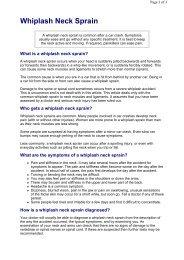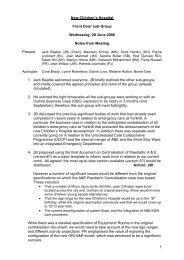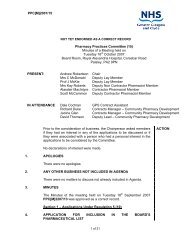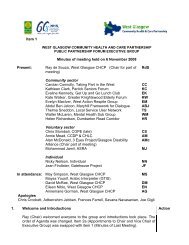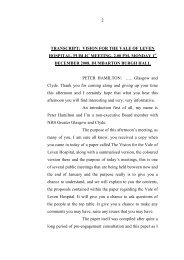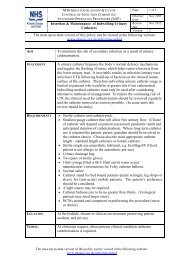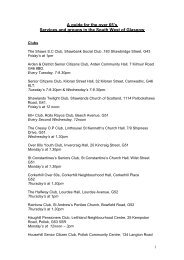Guidelines For Insulin Initiation and Adjustment In Primary Care
Guidelines For Insulin Initiation and Adjustment In Primary Care
Guidelines For Insulin Initiation and Adjustment In Primary Care
Create successful ePaper yourself
Turn your PDF publications into a flip-book with our unique Google optimized e-Paper software.
Patient Education<br />
<strong>Guidelines</strong> <strong>For</strong> <strong><strong>In</strong>sulin</strong> <strong>Adjustment</strong> <strong>In</strong> <strong>Primary</strong> <strong>Care</strong><br />
To achieve the best possible diabetes care outcomes; health professionals <strong>and</strong> people with<br />
diabetes need to work as equal members of a team. It is essential that the person underst<strong>and</strong><br />
their condition to enable them to effectively contribute to the team <strong>and</strong> be in control of their<br />
condition.<br />
Education should be tailored to suit the individual, staged to the appropriate time, <strong>and</strong><br />
provided when questions are asked. A summary of educational topics covered are outlined<br />
under the following headings:<br />
1. Nature of Diabetes<br />
2. Day to Day Management of Diabetes<br />
3. Special Issues<br />
4. Living with Diabetes<br />
5. Educational Resources<br />
6. Monitoring <strong>and</strong> Management<br />
1. Nature of Diabetes<br />
• Explanation of diabetes, its causes, symptoms, treatment, nature <strong>and</strong> prevention of<br />
long-term complications.<br />
• Discussion of person’s feelings regarding diabetes e.g. preconceived ideas, fears of<br />
complications, acceptance of diagnosis etc.<br />
• Details of care provision i.e. whether care is provided by hospital only, general practice<br />
only or by integrated care: frequency <strong>and</strong> importance of review.<br />
• The purpose of Diabetes UK <strong>and</strong> details of how to access it nationally <strong>and</strong> locally (see<br />
Appendix 5).<br />
2. Day to Day Management of Diabetes<br />
• Importance of healthy lifestyle e.g. healthy eating, undertaking regular physical activity<br />
<strong>and</strong> avoiding smoking.<br />
• Importance of self-management.<br />
• Outline of normal blood glucose levels, provision of target for good blood glucose<br />
control <strong>and</strong> discussion of factors affecting glucose levels.<br />
• Key Dietary <strong>In</strong>formation.<br />
1. <strong>In</strong>dividualised advice <strong>and</strong> encouragement to achieve a low fat, low sugar, low salt,<br />
<strong>and</strong> high fibre diet.<br />
2. Regular eating patterns.<br />
3. Regular carbohydrate distribution, use of complex carbohydrates <strong>and</strong> encourage<br />
the use of foods with a low glycaemic index, e.g. porridge, wholegrain bread, peas,<br />
beans, lentils.<br />
4. <strong>In</strong>dividualised realistic targets for weight control <strong>and</strong> good glycaemic control.<br />
5. Dietary changes required <strong>and</strong> their practical application for individuals.<br />
6. Appropriate use of low kcal, low sugar, <strong>and</strong> low fat products.<br />
Reviewed January 2010<br />
23





